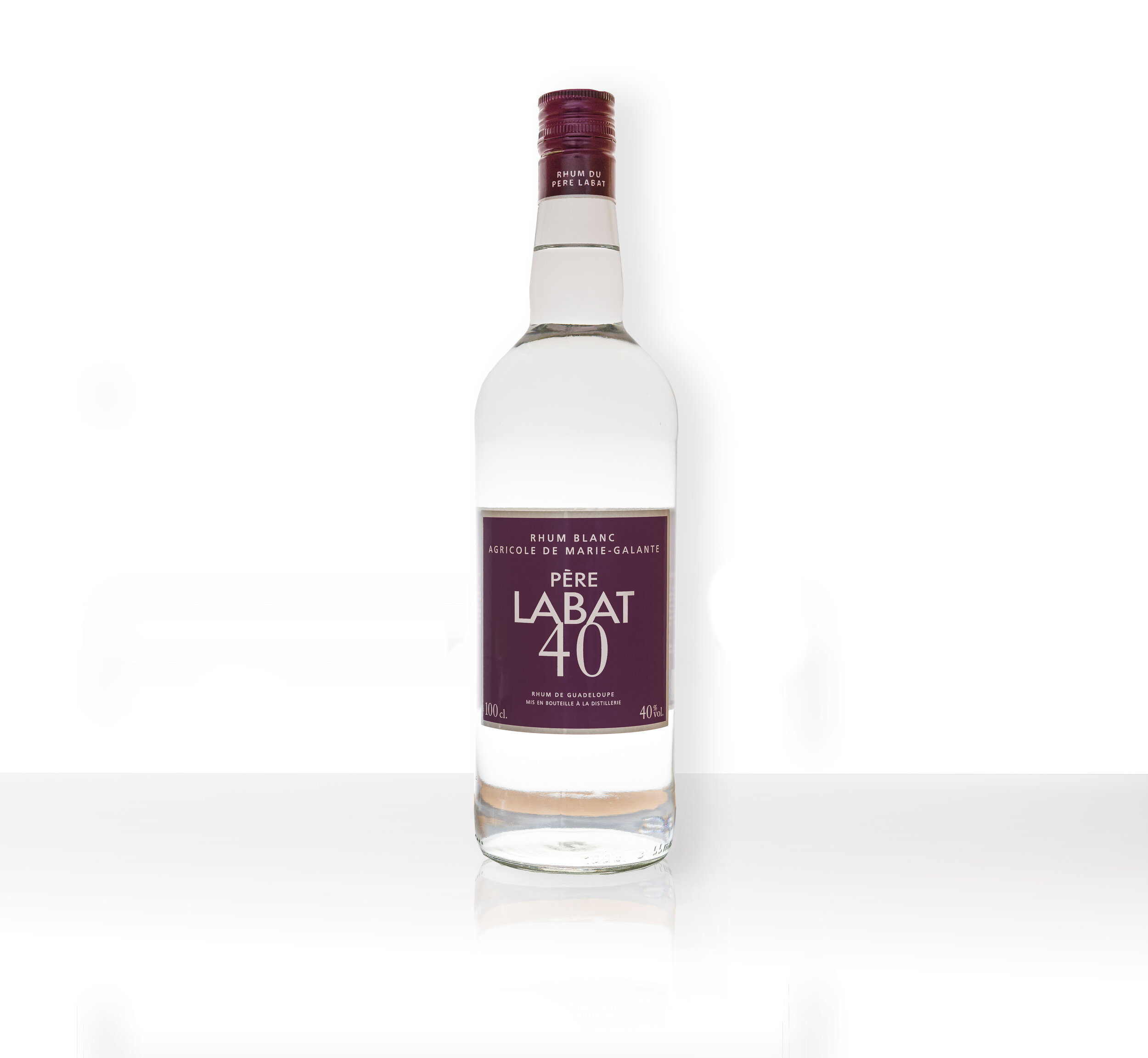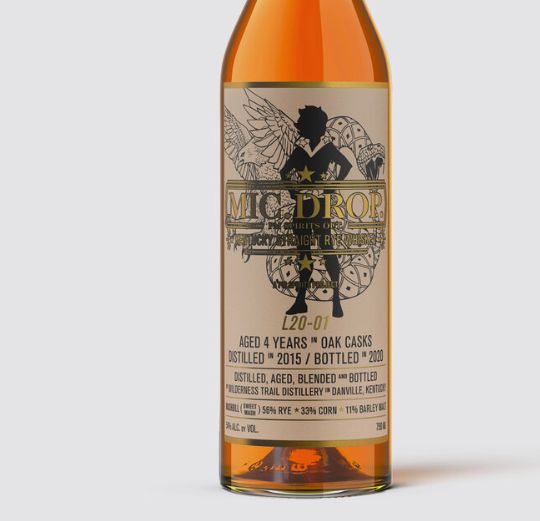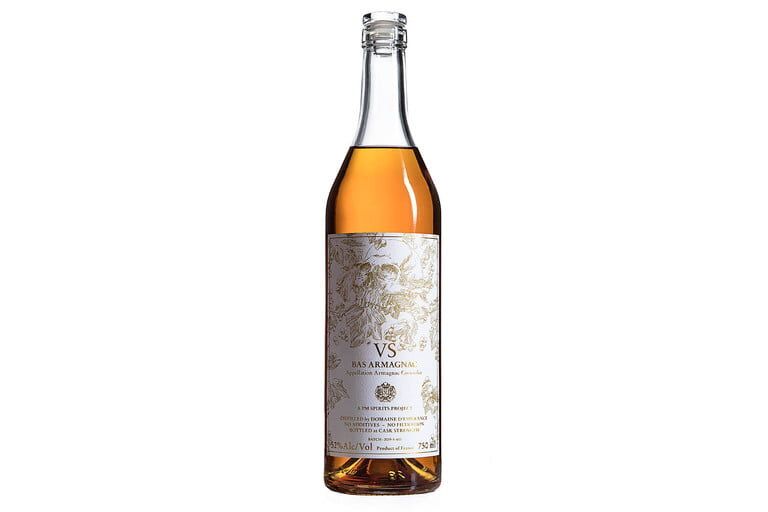Geeky Cocktails: Meet the Man Behind the Artisanal Spirits Movement
When Nicolas Palazzi quit his day job as a chemical engineer in 2008, the spirits world got a little more interesting. The French native had moved to New York City to manage a medical research lab, but brought with him a curiously intense affinity for rare-cask Cognac. Dismayed by the lack of like-minded, handcrafted products on the market in the U.S.—where the spirits scene was still largely focused on big-name brands despite a booming, more intelligent cocktail culture—he set out to learn the business from the ground up. He officially launched his import company, PM Spirits, in early 2011 with just two independent Cognac producers (Paul Beau, Guillon-Painturaud) and six products. Now his book includes profound Spanish brandies, grappa from famed Sicilian avant-gardiste Frank Cornelissen, and Mexican Fernet (a bitter liqueur).
Palazzi is being lauded by beverage authorities nationwide as the go-to for distillates of character and terroir, and Palazzi’s unique bottles now line the shelves of restaurant and bar greats like The NoMad in New York City, Jack Rose Dining Saloon in Washington, D.C., and Scopa Italian Roots in Venice, California. Had an interesting digestif you’d never heard of before while out dining? That might have been made possible through Palazzi’s meticulous sourcing. He talks to Vogue.com about cocktails, “geeky” spirits, and the six bottles he’s most excited about now.
The tagline on your website is “provider of geeky spirits.” What does “geeky” mean in the spirits world?
When it comes to spirits in general, one doesn’t buy a product, one buys a brand. They buy the marketing and the status that the label conveys, but they don’t have a gauge on the true quality of the stuff inside the bottle, how it was made, who made it, and why it tastes the way it does. So by “geeky,” we mean the other stuff. It’s made by real people. It has an actual flavor profile that is specific to the place in which it’s made and the ingredients it’s made from. It’s not sweetened to death, artificially colored, or made to be as innocuous as it can be.
From that perspective, it seems to be as much about supporting the little guy as it is about supplying cool products.
It absolutely is. We want them to keep doing what they’re doing. When you start working with somebody, and they’re distilling out of a shack or their house is run-down, and you come back a year and a half later and see that they’ve made improvements. . . I’m not saying it’s 100 percent because of what we’ve done, but there is something rewarding about working with real people and the fact that the money spent buying these products can go toward their living and the creative process as opposed to feeding some giant company. I have nothing against big companies, but that makes it more meaningful to me. And the other result is that we’re educating people; we’re getting the authentic stuff to the people who will care about it. We’re showing them what these spirits used to taste like before mass marketing existed and can still taste like today.
What is a typical reaction of someone tasting spirits in your portfolio who is more used to tasting name-brand products?
People are not sure what to expect. A lot of people start out thinking that they’re doing us a favor by tasting these products that they’ve never heard of before, but they end up realizing that there’s a world of difference. I had one buyer who thought he didn’t like Cognac, then after one taste of the Paul Beau VS, he lit up. He was all, “Oh, wow, that’s really interesting,” and, “That’s a set of aromas and flavors I’ve never experienced before.”
There’s something extra that happens in the brain with the sensory experience of taste. When you taste something new and you love it, there’s an emotional connection that takes place. At that point, the person is not likely to forget it. They know you’re not fooling around and will want to see what else you have in your bag, even if it’s not something that will appeal to their particular clientele. They know you’re not wasting their time.
Would you say that the movement toward artisanal spirits is picking up speed, like what we saw happen to the craft-beer category?
It has definitely changed over the last six or seven years. Before, nobody cared, really. If you take bourbon as an example, you used to be able find anything you’d want and more on the shelves for a lot less money because people just didn’t know about it. And now certain bourbons are unavailable and allocated. Spirits are becoming cool. Drinkers have started paying more attention to what they’re drinking. I think that’s good news for everyone involved.
What is the coolest cocktail that you’ve encountered made with one of your spirits?
In Texas, I saw a sidecar made with a single-cask Cognac from a producer named Gourry [de Chadeville] that I brought in last year. This Cognac is distilled in a wood-fired pot still and is 64.3 percent alcohol, so that is a pretty kick-ass sidecar. You can’t drink too many of them! And at Cane & Table in New Orleans, they’re making a daiquiri with a rum I sourced in Spain from the sherry producer Equipo Navazos. It’s a bold daiquiri and is totally delicious.
What’s the latest addition to your portfolio that you’re most excited about? The thing that we don’t know about yet but will?
Calvados! I was lucky enough to be introduced to Eric Bordelet, the cider-maker in Normandy. It turns out the guy has been distilling for a number of years but never released anything. He’s doing single-cask full-proof unfiltered Calvados, distilling from both his cidre and his poiré (pear cider). Plus, his mentor was Didier Dagueneau, the famed Pouilly-Fumé winemaker, so everything is aged in ex-Silex casks from Dagueneau. It’s incredibly cool and will be available stateside in the beginning of 2016.
Intrigued? Here are six unique bottles Palazzi recommends adding to your bar (or gifting a very good friend):
Navazos-Palazzi Double Barreled Cask Strength Spanish Rum
A 100 percent molasses-based rum from the Antilles. Dark, meaty, with a nuttiness derived from the Oloroso sherry cask it ages in for more than ten years. Finishes bone dry. Only 1,500 bottles produced per year.
H. Beudin Single Cask 18 Year Calvados
Calvados with a kick, bottled at full proof. Gives a sense of what the pure stuff tastes like when sampled from a cask. Selected by star cider-maker Eric Bordelet.
Gourry de Chadeville Grande Champagne Cognac
One-man operation led by Pierre Goursat Gourry on nearly 25 acres of vineyards in Grande Champagne. A young, bold Cognac reminiscent of ripe apple and smoke, it spends seven years in an ex-first growth Sauternes cask.
Domaine d'Aurensan 1975 Single Cask Armagnac-Ténarèze
Like a vintage-dated Armagnac on steroids, with zero sugar, zero water, and zero coloring added. Distilled by the Rozès family. Mature flavors of dried prune, leather, and earth, with a seemingly endless finish.
Laurent Cazottes Poire Williams Eau-de-Vie
Distilled from organic pears dried to concentrate their flavor and then the pits, seeds, and stalks removed. Only 200 half-bottles of this Poire Williams come in to the U.S. each year.
Frank Cornelissen MunJebel Rosso Grappa
What happens when Sicily's most emblematic natural winemaker makes grappa. Distilled in a wood-fired vapor still from volcanic Mt. Etna’s indigenous Nerello Mascalese grapes.


















